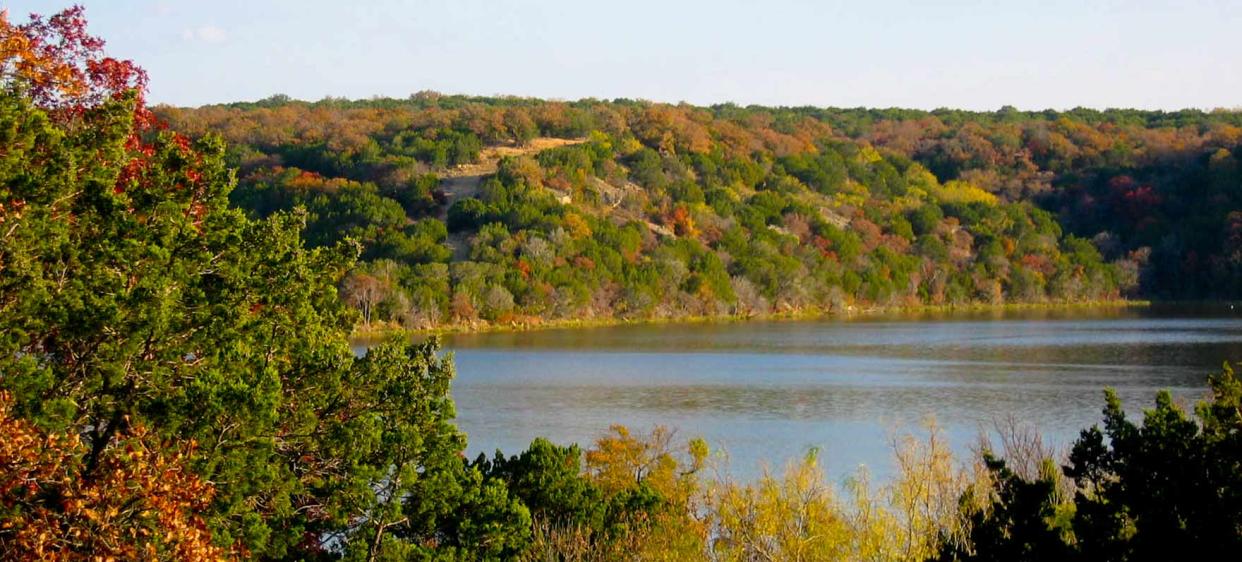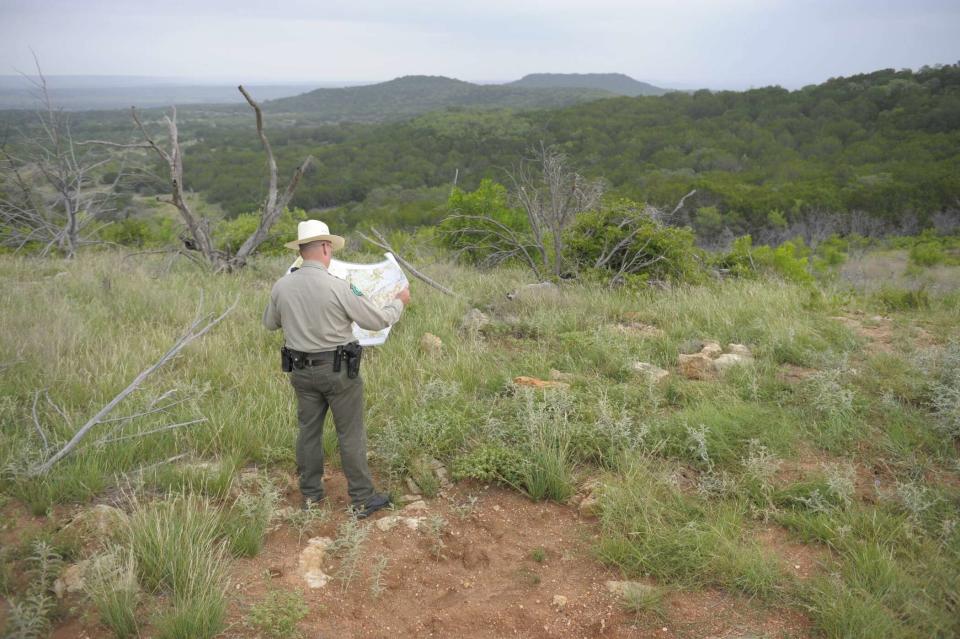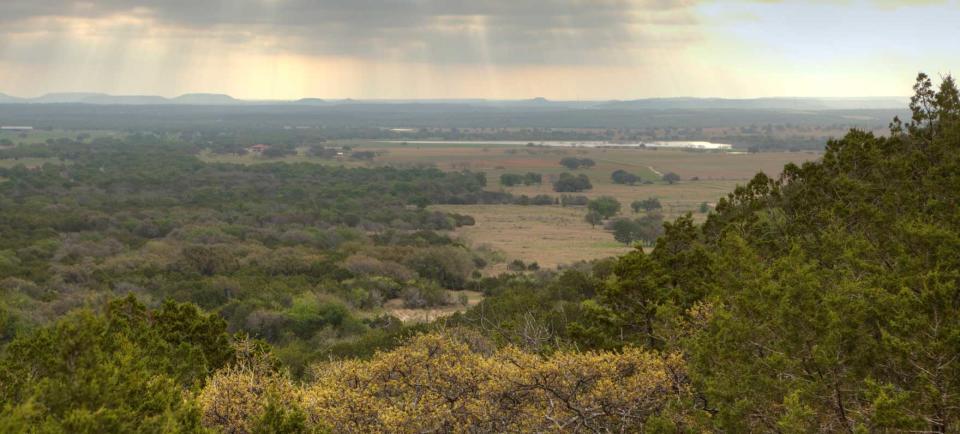Check out highlights from Palo Pinto Mountains - Texas' newest state park

STRAWN – Roughly an hour west of one of the nation’s largest metropolitan areas, a vast landscape of nearly 4,900 undeveloped acres stretches along the Western Cross Timbers.
Its rolling hills, coupled with blooming prairies and picturesque waterways, support habitat for hundreds of Texas species ranging from towering oak trees and endemic flowers to wild turkey and limber coyotes.
With its fate under the guidance of state officials, the land stands as the first area to be established as a Texas state park this century, with the previous established nearly 20 years ago.
Texas' newest state park

The Palo Pinto Mountains State Park was initially slated for completion in 2023, albeit an ambitious goal, as a celebration of the Texas state park system’s centennial. Park officials now say the public should expect an opening date sometime this year, though construction could continue into 2025, halting the park’s opening until next year.
About five miles north of Interstate 20, and exactly 75 miles between each Abilene and Fort Worth, the park is easily accessible to much of the state with an estimate to eventually attract about 75,000 visitors annually.
Last week, an employee of the park – who referred to herself as “Ranger Kate” – detailed some of the amenities the public could expect to see, mostly concentrated in a 140-acre area. Among them: 60 campsites, which includes 25 RV sites with water and electricity, 13 hiking primitive camping sites, 12 walk-in tent camping sites and 10 equestrian sites for those with horses.
“When I say hiking (to the primitive sites), it’s going to be probably about a mile and a half to two miles of hiking," she said in a video on Facebook. "The view from up there is absolutely gorgeous – and it’s an easy hike. But they’re completely primitive, so there’s no water or electric out there.”
Overlooking a 1,400-foot peak, the pavilion, available for rent, will serve as a space for group activities with two fire pits, picnic tables and electricity, she said. Also in the plans for the park is a playscape for children.
There will also be more than 12.5 miles of multi-use trails for hiking, biking and equestrian use along with kayak and canoe rentals.
In 2011, the Texas Parks and Wildlife Department purchased the initial 3,300 acres of the property with the sale of an undeveloped 400-acre site on Eagle Mountain Lake, and the City of Strawn donated an additional 120 acres surrounding Tucker Lake.
A public-private partnership with the Texas Parks and Wildlife Foundation, the official nonprofit partner of TPWD, with a commitment to leverage $21 million of public funds for development, has further propelled the park’s future, according to the organization’s website.

Demand for parkland
The rising demand for public outdoor space in Texas is quickly exceeding its availability.
Today, there are 89 state parks spread across diverse landscapes, ranging from the piney woods in East Texas to the rugged mountains in Fort Davis and protected coastal areas along the Gulf of Mexico.
But popular parks like Garner State Park along the Frio River and Palo Duro Canyon State Park in the Panhandle are grappling with overcrowding, while others like Brazos Bend, Enchanted Rock, and Bastrop, are gradually surrounded by urban encroachment and increased development.
Palo Pinto Mountains State Park comes as one solution. But experts say more is needed.
Years ago, in 2001, the Texas Parks and Wildlife Department commissioned Texas Tech University to conduct a study that would serve as the basis for the agency's future planning. The final report recommended approximately 55 acres of state parkland per every 1,000 Texans, signaling the need for an additional 1.4 million acres by 2030.
The state still falls short — and by a wide margin, at that.
Environment Texas Director Luke Metzger said an open records request that the nonprofit filed a few years ago revealed that only around 250,000 acres have been developed since the report came out roughly 20 years prior.
"The state is still more than a million acres shy than what it needs to keep up with demand for recreation and state parks," he said.
In a more recent study that the Environment Texas Research & Policy Center published in August, the organization revealed that Texas ranks 35th in the nation for state park acreage per capita.
Facing an uphill battle, as about 95% of land lays in the hands of private citizens and businesses, Texas has only around 636,000 acres of state parkland for a population exceeding 29 million people.
"It's just been an underinvestment by state leaders. It's not like that need is being met elsewhere — or that we don't need as many parks," Metzger said before referring to two important pieces of legislation that support Texas state parks. "We saw that with the long fight to win the support to have sales tax fund our state parks, and then, of course, with Proposition 14 — finally the legislature responding to the public demand for this."
In the recent Nov. 7 election, Texans were presented with a proposition to establish the Centennial Parks Conservation Fund. This fund, exceeding $1 billion, promises to establish new state parks and enhance existing parklands. With an overwhelming 76% majority, equivalent to 1.9 million votes, the proposition reflects the public's strong inclination towards expanding outdoor public spaces.
Earlier, in 2019, voters approved a proposition that stated all money generated from the existing sales tax on sporting goods could only be given to the Texas Parks and Wildlife Department and the Texas Historical Association.
This article originally appeared on Lubbock Avalanche-Journal: Highlights from Palo Pinto Mountains Texas' newest state park

